 |
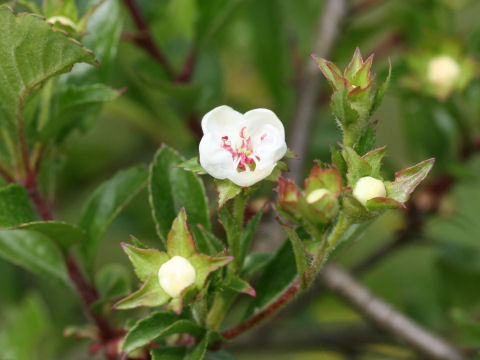

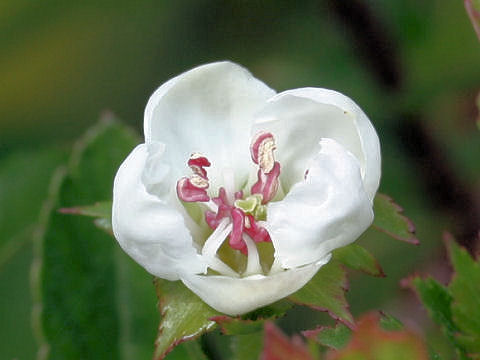

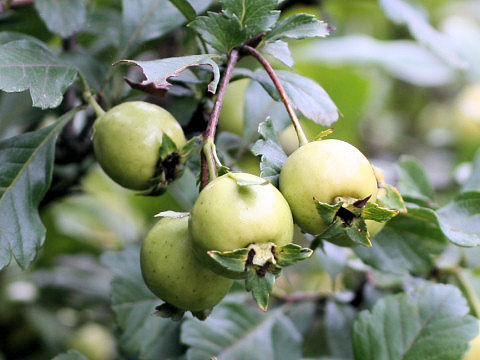

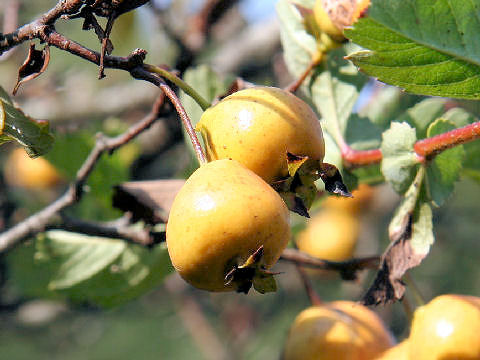

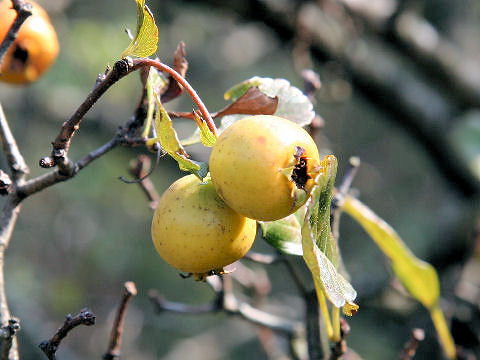

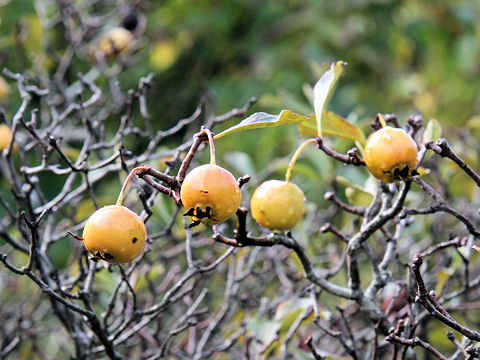

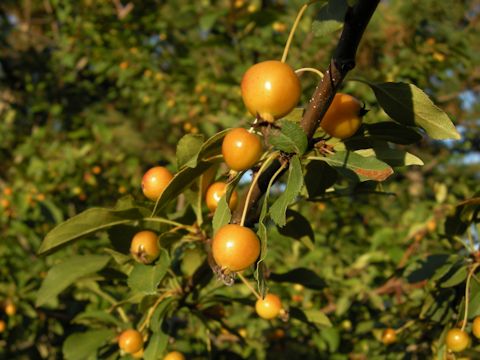

|

|
中国やモンゴルが原産です。わが国へは江戸時代の中頃に薬用として渡来しました。数多く分枝し、小枝には棘があります。くさび形または広倒卵形の葉は互生します。5月から6月ごろ、白色の5弁花を咲かせます。果実は9月から10月ごろ、黄色く熟します。
|

|
バラ科サンザシ属の落葉低木で、学名は Crataegus cuneata。英名は Chinese hill haw。
|

|
The Chinese hill haw (Crataegus cuneata) belongs to Rosaceae (the Rose family). It is a small deciduous tree that is native to China. It was introduced into Japan as a herbal medecine in the middle days of Edo Era (about 260 years ago). This tree is much branched and has spines on the twigs. The leaves are cuneatic or broad obovate and alternate. The white 5-petaled flowers come in May through June. The fruits are ripen in yellow in September to October.
|

|
[上・中1] 大阪府交野市「大阪市大付属植物園」にて、2006年05月06日撮影。
[中2] 同上にて、2005年09月14日撮影。
[中3・中4] 同上にて、2006年11月03日撮影。
[中5] 同上にて、2007年11月10日撮影。
[下] アメリカ・ワシントンDC「アメリカ国立植物園」にて、2009年09月14日撮影。(photo by Jon Suehiro)
|
 |








